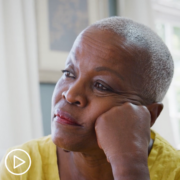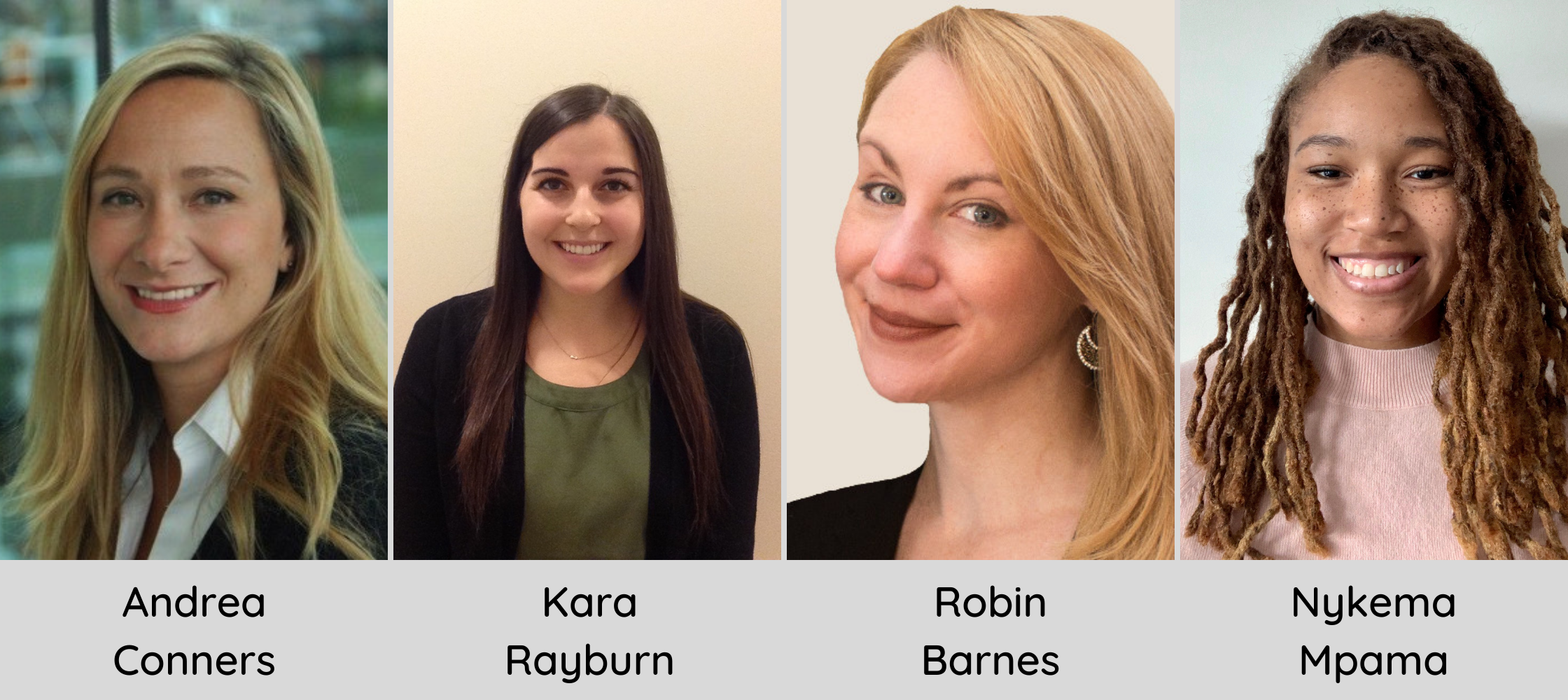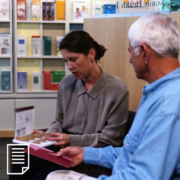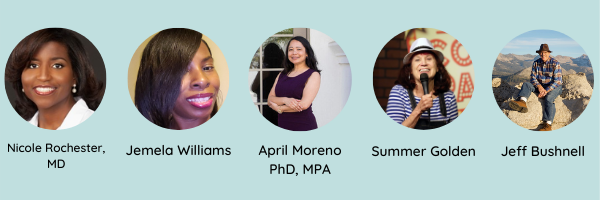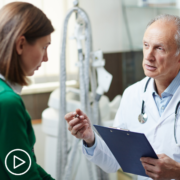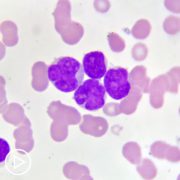Breast Cancer Awareness Month and Its Many Shades of Pink (and Blue)
We are more than half-way through Breast Cancer Awareness Month (BCAM) – impossible to miss given the pink ribbon avalanche that arrives each Fall. While there is no denying that BCAM has played a significant role over the past two decades in raising public awareness of breast cancer, there is nevertheless growing criticism of its off-balance approach to awareness-raising, with many key messages becoming lost in a sea of “pink-washing.”
“BCAM is a 2-sided coin in our community,” states Jean Rowe, Director of Support and Provider Engagement at The Young Survival Coalition. On the one hand, she explains, celebrating successful treatment outcomes and raising awareness is important, but “on the other side, expectations that come with the pink ribbon in October can be overwhelming, isolating, infuriating and bewildering.”
The pink ribbon, so long a symbol of breast cancer awareness and support, has become for many a symbol of what’s missing from the BCAM narrative. When I first pinned a pink ribbon on myself, I was newly diagnosed with breast cancer. Back then, I felt that wearing a ribbon was a symbol of solidarity, and I wore it proudly. Looking back, I now see that my view of breast cancer was one-dimensional. Standing today on the other side of cancer I see a broader picture, a richer landscape of many shades beyond pink.
A Whiter Shade of Breast Cancer
For Siobhan Freeney breast cancer is not pink. “When I see pink I’m reminded of all things feminine, “ she says. “My delayed breast cancer diagnosis resulted in a mastectomy. There’s nothing feminine or pink about that. I see breast cancer as the elusive ‘snowball in a snowstorm’ because my breast cancer, all seven centimeters of it, was missed on consecutive mammogram screenings. I know now that I had extremely dense breasts, this caused a masking effect – white on white.”
Breast Cancer Shaded Blue
Much of the criticism of BCAM centers on breast cancer campaigns which over-sexualize the disease, equating breasts with womanhood and femininity. Rod Ritchie, who was diagnosed with breast cancer in 2014, points out that “October is a bad time for male breast cancer survivors because the trivialization and sexualization of the disease by the pink charities reinforces public awareness that breast cancer is gender specific. Since there’s little attempt to educate men that they need to be aware of symptoms too, we are diagnosed later and have a poorer prognosis.”
Ritchie suggests “adding some blue to the pink, encouraging research on us, and screening those with a genetic propensity. Reminding the community that this is a genderless disease will give us a chance to receive an early diagnosis and therefore a better prognosis. We deserve equality.”
Metastatic Breast Cancer: The Other Side of BCAM
Learning about metastatic breast cancer (MBC, also called stage 4, secondary breast cancer (SBC) or advanced breast cancer) from online blogs and social media networks was revelatory for me. As Lisa de Ferrari points out, “although breast cancer has been commercialized and is often presented in a way that seems to minimize the seriousness of the disease, the reality is that deaths from this disease remain extremely high.”
MBC has been referred to as a story half-told, the other side of BCAM we don’t hear enough about. “Every Breast Cancer Awareness Month the huge focus is on awareness of primary disease. There has been little focus on secondary breast cancer and the only day for awareness is 13th October,“ points out Jo Taylor. “Awareness of SBC needs to be across the whole month.”
Nancy Stordahl is unequivocal in her criticism of the failure each October to adequately raise awareness of MBC. “Despite all the pink, all the races, all the pink ribbons, most people still know little or nothing about metastatic breast cancer,” she writes. “No wonder so many with metastatic breast cancer feel left out, isolated, alone and yes, even erased.”
How To Honor All Sides of the BCAM Coin
This article is not meant in any way as a criticism of those for whom wearing a pink ribbon is meaningful. I am grateful that the original pink ribbon movement has brought breast cancer out of the dark ages when it was taboo to even mention the words “breast cancer” aloud. However, time has moved on, and it is time to challenge the singular narrative of breast cancer as a female only disease wrapped up prettily in a pink ribbon.
So to quote, Gayle A. Sulik, a medical sociologist, and author of Pink Ribbon Blues, “this is not a condemnation of anyone who finds meaning in the ribbon or public events. It is a call to broaden the discussion, re-orient the cause toward prevention and life-saving research, and acknowledge the unintended consequences of commercialization, festive awareness activities, and the lack of evidence-based information that makes its way to the public.”
It’s important to honor your feelings and emotions at this time. If you want to celebrate BCAM, celebrate; if you want to sit out this month or use it as an opportunity to educate others in a different way, then do that. In the words of Rowe, “Everyone gets to experience BCAM the way in which they need and want to.”
However, I will add to this that whichever way you choose to honor this month, be more questioning. As MBC patient advocate Abigail Johnston says, “ask if the pink ribbon represents the community you are trying to reach before using it automatically. Be open to understanding that not everyone identifies with the same images and concepts.”
Perhaps consider wearing the more inclusive green and teal ribbon designed by METAvivor. To highlight the uniqueness of the disease and show its commonality with other stage 4 cancers, METAvivor designed a base ribbon of green and teal to represent metastasis. “Green represents the triumph of spring over winter, life over death, and symbolizes renewal, hope, and immortality while teal symbolizes healing and spirituality. The thin pink ribbon overlay signifies that the metastatic cancer originated in the breast.”
Also use this month as an opportunity to broaden your understanding of breast cancer awareness. In the words of Terri Coutee, founder of DiepCFoundation, “Without the metastatic community, I cannot understand, learn, or appreciate their experience of living with breast cancer. The men in the breast cancer space who are living with or have been treated with this disease have amplified their voices over the years to level the breast cancer awareness campaign to let us all know, breast cancer does not discriminate.”
Above all, don’t let breast cancer awareness in all its many shades be for one month alone. “When I began my advocacy, I hopped on the October bandwagon to bring awareness to a disease that has affected me, my own family, and dear friends too often, “ says Terri. “ Now, I look at it as only one month out of a year we need to bring awareness to latest studies in oncology, clinical trials, surgical best practices, emotional recovery, support, all mixed in with a bit of gratitude for the friends I’ve made along the way and to mourn those I have lost.”

A Stanford Medicine X e-Patient scholar, Marie Ennis O’Connor is an internationally recognized keynote speaker, writer, and consultant on global trends in patient engagement, digital health and participatory medicine. Marie’s work is informed by her passion for embedding the patient voice at the heart of healthcare values. She writes about the experience of transitioning from breast cancer patient to advocate on her award-winning blog Journeying Beyond Breast Cancer.


